When Sam arrived home complaining of the unexciting classes he had to take, his mother provoked: “Okay, so why don’t you create your own school then?”
A few weeks later the “Independent Project”, a school inside a school, designed and run by its own students, started its pilot semester at Monument Mountain Regional High School, in Great Barrington, located in the North-East region of the United States.
Want to see the results of how it has been thus far? Watch the video, and keep reading the remainder of the article below!
[youtube width=”853″ height=”480″]http://www.youtube.com/watch?v=RElUmGI5gLc?rel=0&cc_load_policy=1[/youtube]
Samuel Levin felt dissatisfied with his relationship to school, and he observed that this was experienced by most of his school colleagues. Also it was derived from something not uncommon in most classrooms: lack of interest in the subject and study matter, and consequently a learning process full of inconsistency and flaws. Motivated by this, and after the provocation from his mother, Samuel approached the principal of the school with an ambitious project. In his own words:
“[The] intent was to design a school in which students would be fully engaged in and passionate about what they were learning, would have the experience of truly mastering something, or developing expertise in something, and would be learning how to learn.”
The main ingredient in achieving this goal was to seize the opportunity, by the students being in control of their own learning process.
The principal of the school, perhaps to Sam’s surprise, welcomed the idea and authorized the development of a pilot project for the duration of one semester. The group initially had 8 students, composing of grade 10, 11 & 12 Students. Previous school performance was not a prerequisite for admission into the project. Thus, the group had students that ranged from those with the top marks in most subjects, while others whom obtained lower scores.
The Program
The “Independent Project” started with its first week by “decompressing”, which consisted of activities which aimed to dismantle the mental structures and preconceptions that the students naturally formed after more than ten years of traditional classroom learning and to prepare them for freedom and responsibility to take charge of their own educational process.
After this initial period, the students divided their time in exploring these three objectives:
- The Study of Academic Content;
- A Long term “Individual Endeavor”,
- A “Collective Endeavor”.
Academic Content

The study of traditional academic content occurred every morning of the first 15 out of 18 weeks of the semester. The division of this content occurred in a much less fragmented way than in traditional schools. The students considered that there are two basic approaches to the formation of knowledge: Science & Art. Basically, a “Science” is something in which you question over and over and an “Art” is something that you practice. In the first half of the semester, they studied the Natural Sciences (Chemistry and Biology) and the Social Sciences (History, Geography and Sociology) and in the second half Literary Arts (English, Literature & Drama) and Mathematical Arts.
The study procedure was the same throughout the period. On Mondays, each student chose a question to pose on the subject of the week. According to Peter Boyce, one of the students of the pilot group, “The most important thing about the question is that you actually want to know the answer. If the question is yours, the answer is going to feel great when you obtain it.”
Each day, students would research using any resource they preferred including: research in books, the internet, talking to teachers or experts or through direct experience. Finally they had to submit their results to the group on Friday to both give an account of what they had learned that week, and to teach others. Peter stated, “My goal every presentation is to be as engaging as possible and make my care for my subject as infectious as possible – try to make everyone catch it.”
Individual Endeavor

In parallel to the study of the Academic Content, the first fifteen weeks of the semester were also dedicated to an Individual Endeavor. In contrast to the issues that were explored each week, the Individual Endeavor in which students were engaged in every afternoon was a long-term project to be completed by the end of the semester. The students were completely free to set any project they wished, for example writing a novel, building a boat, making a movie, or performing a more complex science experiment. The only requirement of the chosen endeavor was that it must be something that really excited them.
The students were free to plan the agenda, timeline and the implementation of the project. But also had regular meetings in which all reported their progress and discussed their difficulties. Most of them reported that peer pressure was a stronger and more effective manner rather than the pressure to get good grades in the regular school work, and that this allowed for better self-motivation to remain dedicated to the object of study for much longer.
At the end of the fifteen weeks, students should make two presentations regarding their Individual Endeavor. The first presentation was for the group to which they would allow for feedback, including criticism, and suggestions for improvements. After the revisions, based on feedback from their colleagues, there was another presentation for an external audience which consisted of eighty people comprised of other students and staff from the school.
According to Sam Levin, “The public, performative, and celebratory (it came at the culmination of the endeavors and academic work) nature of the night served as a bar to raise the quality of the endeavors even higher than they might have been otherwise, and provided a context within which to frame some of the more abstract endeavors. For example, the student whose endeavor was to write a novel had a very clear goal: write a novel. However the student whose endeavor was to learn how to cook might have lost focus and direction, had he not had to work towards a final presentation, which was to cook a meal for eighty people.”
Collective Endeavor

Finally, in the last three weeks of the semester, the group worked every morning and afternoon on a Collective Endeavor. The idea was that the group could explore any problem of the community or the world and offer a solution to it. During the pilot semester, the class chose “Education” as the theme and decided to make a documentary that discussed some of the problems of the current educational system and offered the Independent Project experience as a solution.
The Results
According to the participants of the Independent Project, the results were excellent. After completing high school, many were accepted to some of the most popular American Universities and have received contact from over 80 schools in the United States and other countries interested in replicating the project.
But surely, the most profound benefits were the skills that students earned and cultivated during the project. In a paper that describes the experience and the results, Sam Levin says:
“The students learned how to conduct research and use the scientific method, how to think mathematically, how to read and discuss novels, and how to write in response to reading. They learned how to organize their time and structure their workday, and how to reflect on and monitor their own work. They also each mastered something, and in doing so learned how to master something. They learned how to communicate their learning, and how to criticize and push their peers. Ultimately, the students learned how to learn, learned how to teach, and learned how to work.”
Learn More about “Project Independent” from the students from Monument Mountain Regional High School :
- Sam Levin’s White Paper pdf describing the project & it’s results.
- “The Independent Project”, documentary by Peter Boyce.
- Why High Schoolers Should be in Charge: Sam Levin in TEDxOxford.
- Blog of The Independent Project from 2012.
What do you think of this story? Would a similar experience work in your school? Would you allow the students to take command of your learning practise? Is this a risky idea, or it’s about time to give students more autonomy?
Leave your opinion in the comment area below!


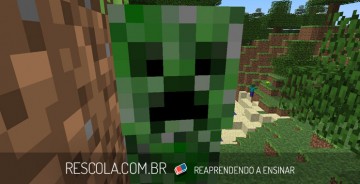

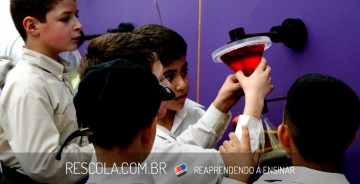
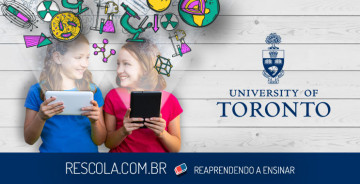
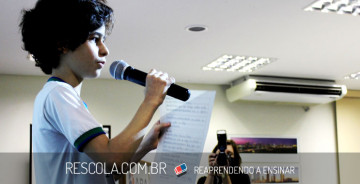
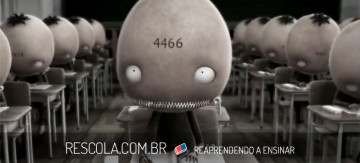
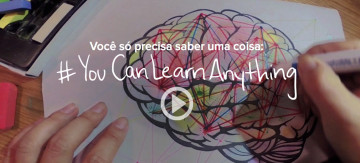
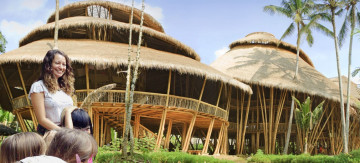
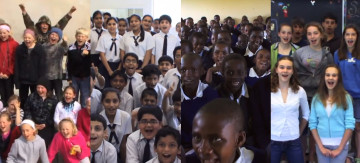
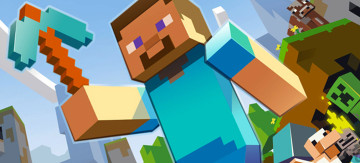
Adorei este artigo e ele me estímulou a ler os outros escrito por vc. Parabéns!
Sou ativa neste tema de “estimular os jovens a fazer/ pensar diferente ” .
Sou Coach e Palentrante e um dos meus trabalhos é apresentar a importancia de preparar os jovens para a escolha da carreira. Acho que essa seria uma atividade extra curricular que deveria estar na grade do ensino médio. Eles saem da escolha “bem formados” mas não tão nem “informados ” !
Convido vc a bater um papo, quem sabe podemos trocar alguma ideia legal!
caso se interesse fique com meu email posso lhe mandar um artigo que escrevi
elisabeth_arc@hotmail.com
Abs e parabéns
Olá, Elisabeth,
Obrigado pelos comentários. Nós adoraríamos ler seu artigo. Se você puder, envie para rescola@rescola.com.br.
Um abraço.
Para vencer a estrutura convencional, venho trabalhando no projeto Transversal do GEL (Grêmio Estudantil Lítero Musical, Esportivo, Ecológico, Comunitário) sob a gestão da Associação de Pais e Mestres, ocupando o espaço escolar nos fins de semanas, feriados e dias santos. Bases estão nos livros postados na internet: http://www.kaxambah.blogspot.com e o Segredo da Princesa, com o subtítulo A ROSA AZUL E O FANTASMA AMARELO. O primeiro livro serviu de base, também, para o Terceiro Manifesto da Educação no Brasil, que segundo a Educadora Ely Pachoalicki, segundo sua postagem na sua página no Facebook “Era tudo que pensava, era tudo que queria”. Grado. Pela atenção.
Excelente!!!!
Trabalho com formação de professores e há muito temos discutido a questão da participação do aluno como ativo em seu processo de construção da aprendizagem. Este artigo vem de encontro com o que trabalhamos como Projeto de Aprendizagem, onde o professor é o instigador e mediador do processo conduzido pelos alunos. Adorei!!!
Olá, Licia. Muito legal ver que mais e mais educadores estão se preocupando em incentivar a autonomia dos alunos. Espero que o artigo seja útil no seu trabalho. Obrigado. 🙂
Já existe uma escola que trabalha dentro desses moldes. Escola da Ponte em Portugal. Lá os alunos se organizam em grupos a partir de um tema e estudam por duas semanas, ao final, é discutido e avaliado o estudo. Não existe series, é uma escola transgressora.
Muito Interessante. Um menino aos 5 anos na pré-escola afirma que as próprias crianças deveriam dar aula, pois os adultos não lhe entendem. Hoje, ele tem 8 anos e todo o dia ele não quer ir a escola porque acha que a escola é uma prisão sem grade. Ele afirma, “mãe fique uma tarde lá e verá”. A mãe sabe, mas o que fazer? A escola é pública e com professores sobrecarregados. Quanto tempo está criança aguentará até enfim ser domesticada.
de 1957 a 1964, eu estudei no Colégio de Aplicação da UERJ (Rio de Janeiro). O colégio foi montado a partir de um grupo inicial de alunos do qual eu fazia parte. No início com 3 turmas de 30 alunos, tinha mais professor do que aluno e nós alunos nos sentíamos muito valorizados e éramos sempre consultados. Foi uma experiência fantástica
Fantástico. Estou realizando na escola onde sou diretor um projeo semelhante, com jovens considerados difíceis, do 2° ano EM. Mas na percpectiva di trabalho coletivo. Inspirado na metidologia O Valor do Amanha, projeto Jovem de Futuro, do Instituto Unibanco.
Jose Geri, Bela Cruz/Ce
O que é mais interessante no artigo foi perceber que houve autonomia da escola para optar realizar o projeto proposto pelo aluno. Acredito que seja essa autonomia que falta nas escolas. O que vemos hoje são programas comprados de empresas, que se dizem mágicas, para melhorar o ensino sem que isso passe pelo crivo de quem está lá nas salas de aula.
Foi essa autonomia que possibilitou que tudo isso acontecesse.
Pingback: Samuel